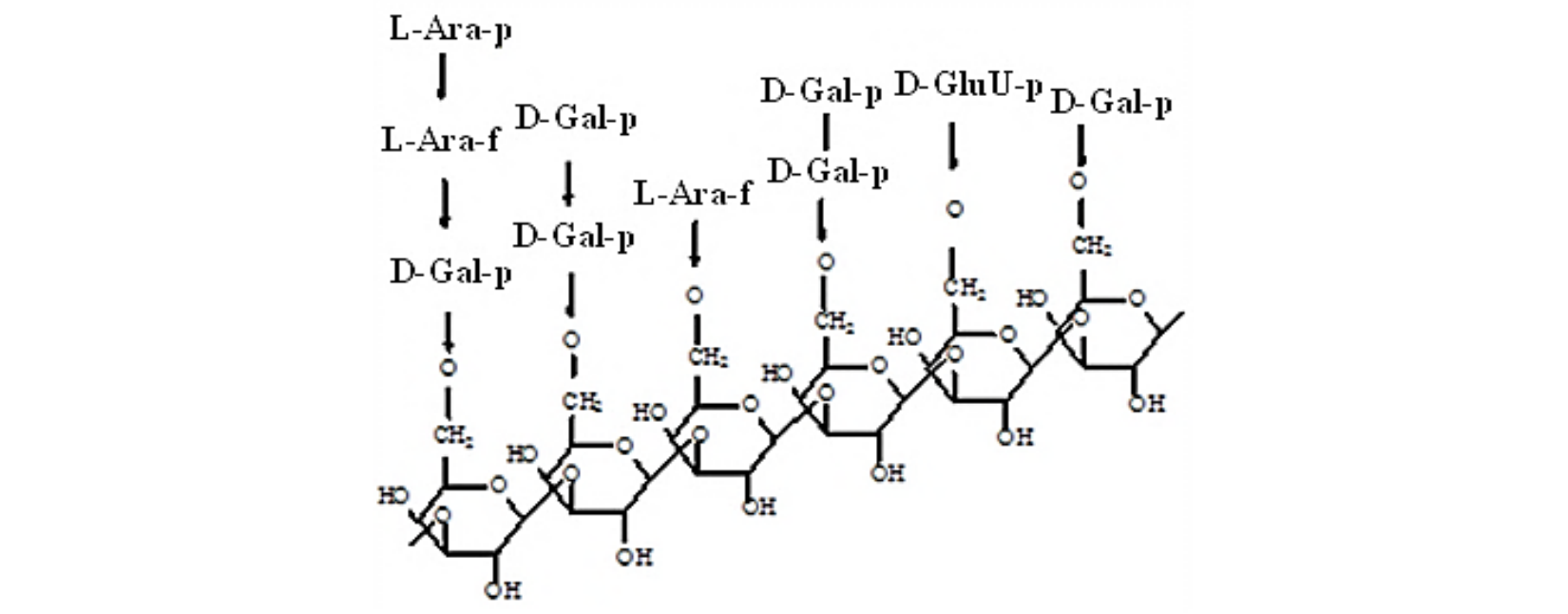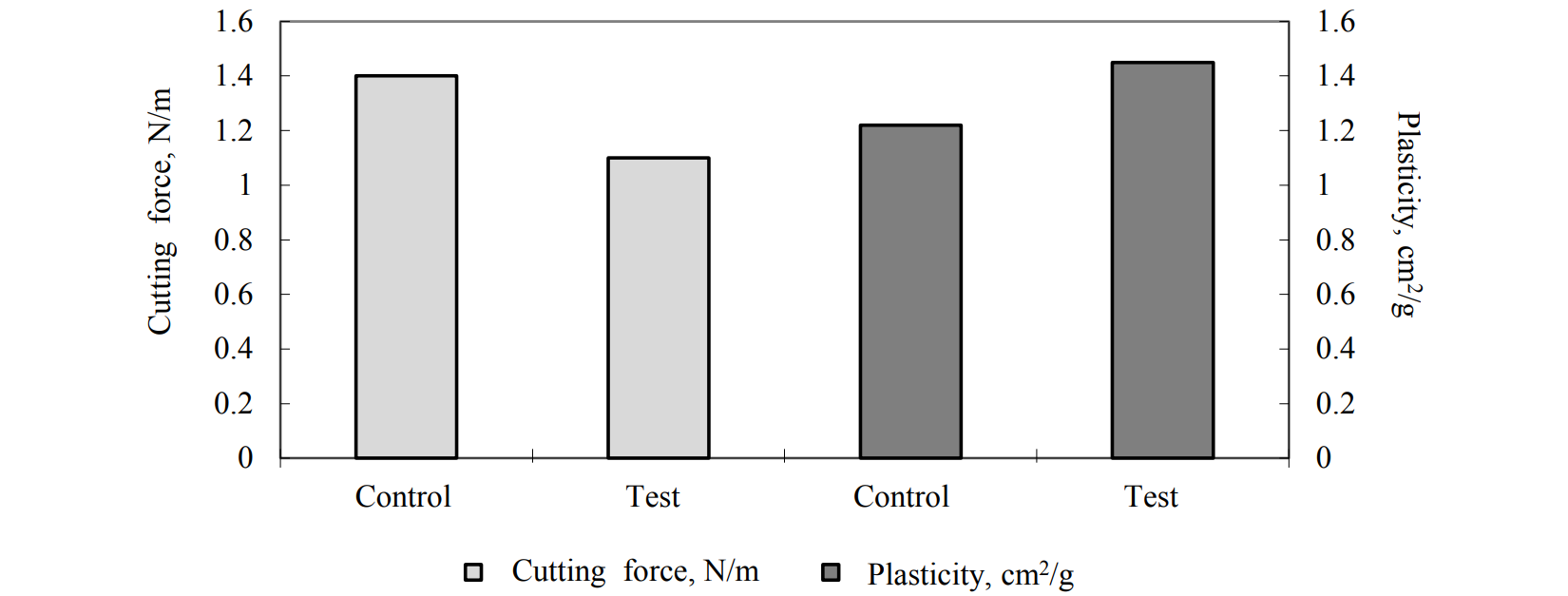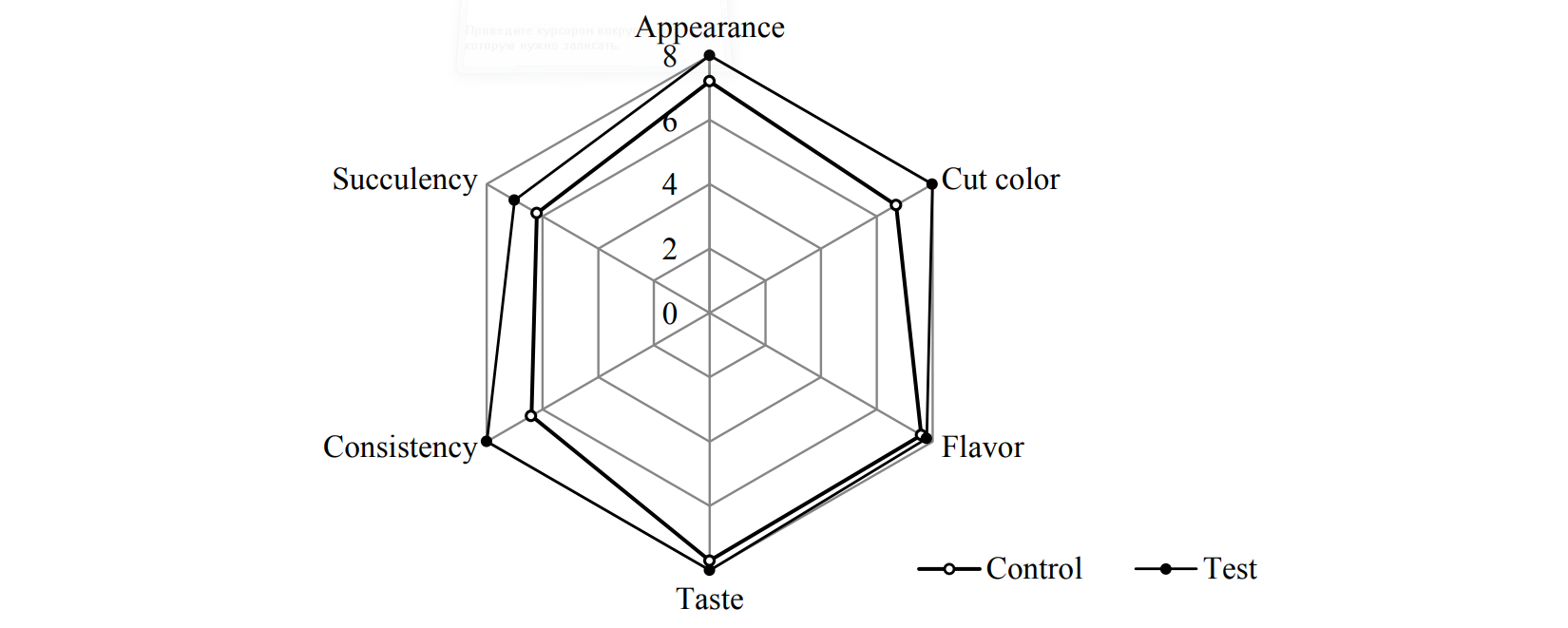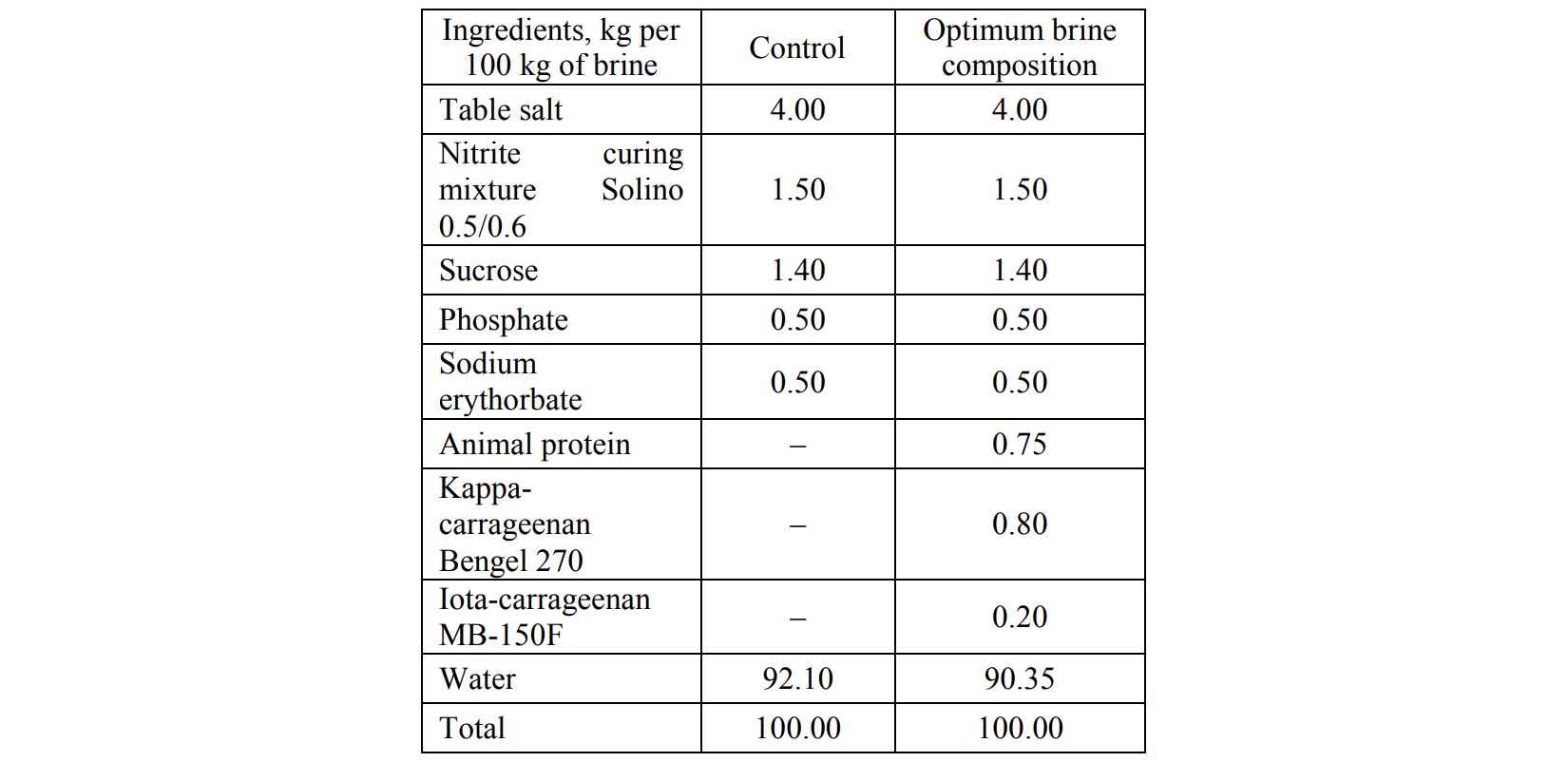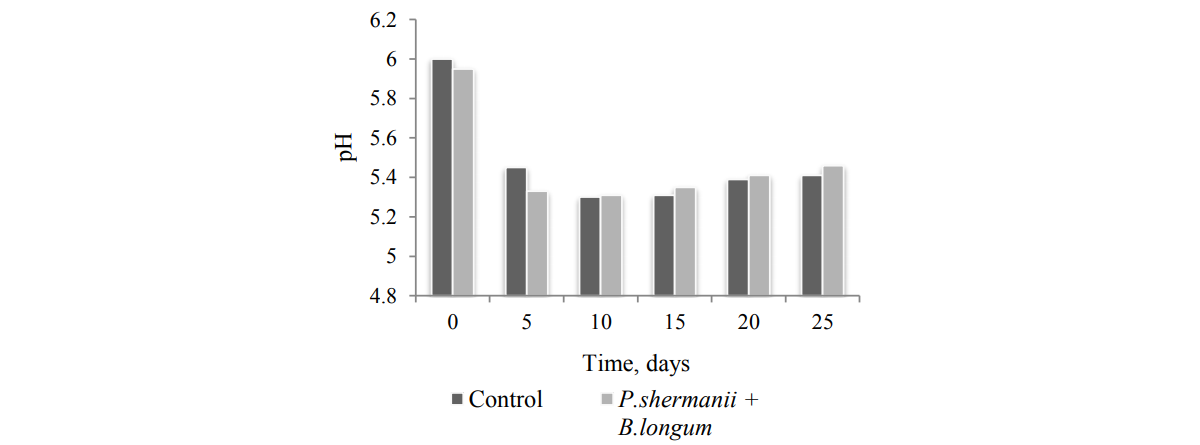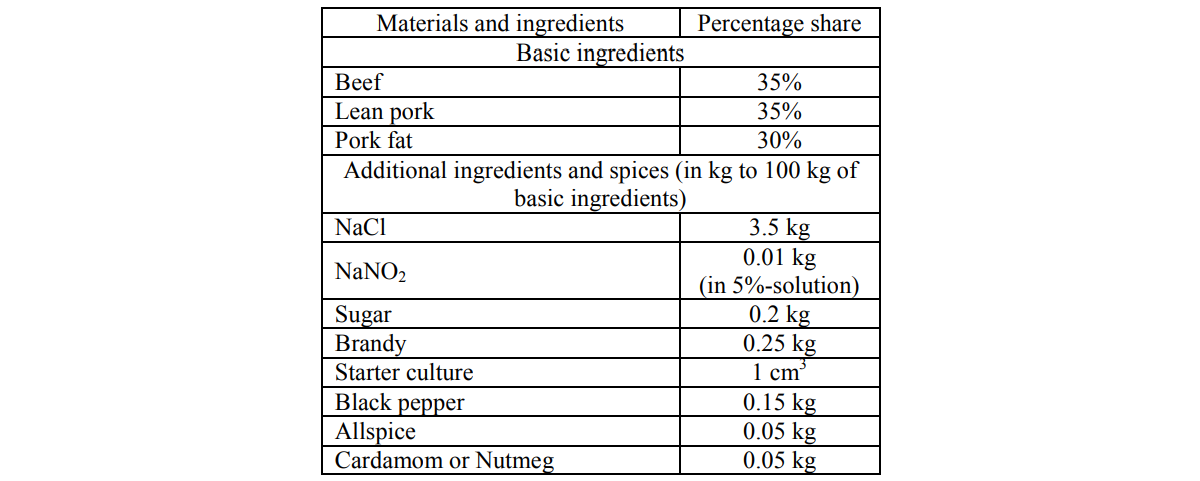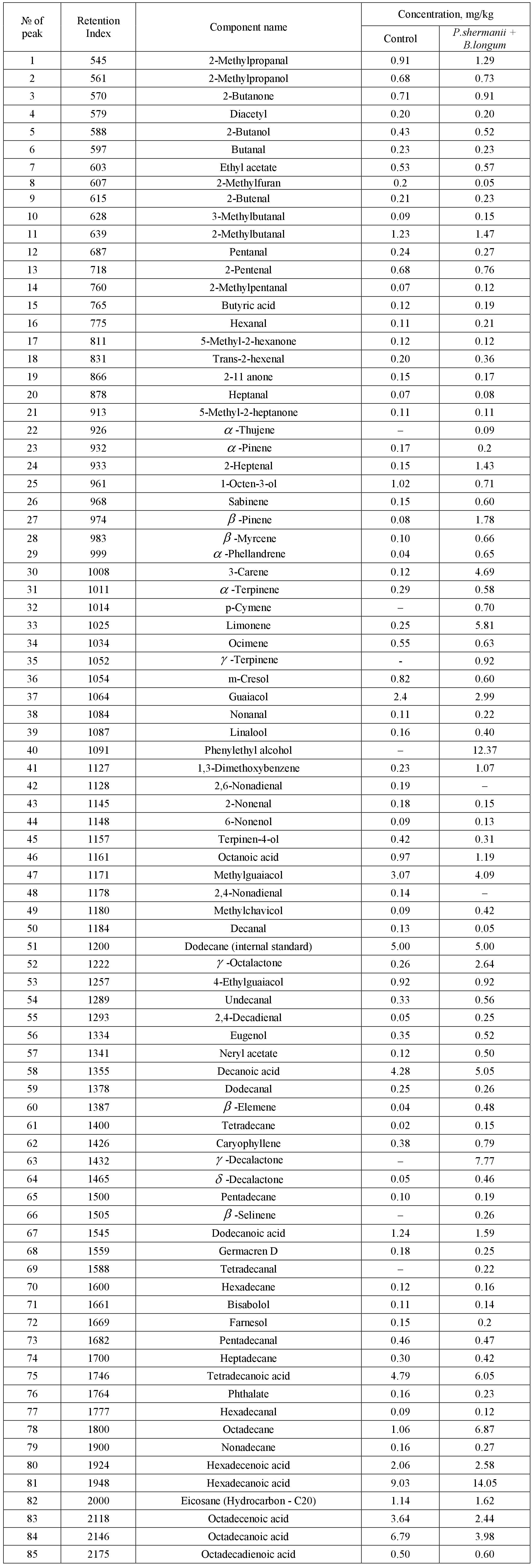Том 5, №1, 2017
6034
Аннотация
Таблицы и рисунки
Various changes in demographic models of world population and evolution of food production technologies have been considered. Numerical constant values in the hyperbolic model of Heinz’s cybernetics are defined as per the CurveExpert program and based on statistical data of the global population increased for the certain period at the mean square deviation of S = 74.8 of one million people a year and the correlation ratio of r = 0.994. Note at the same time that the calculated Heinz`s “Doomsday” falls on the 115th year of the life and the date of birth of this model developer. The relation of the world population growth to stages to develop foodproduction technologies has been analyzed. The marginal population is evaluated in terms of the direct energy considerations. A variety of development hypotheses is proposed throughout the human development history based on the Darwin’s model, astrophysics of the solar system and the policy.
6683
Аннотация
Таблицы и рисунки
Currently, as part of import substitution, it is important to effectively use the reserves of animal protein, for example, horse meat, which has dietary properties due to a balanced amino acid and fatty acid composition and high efficiency in the treatment of anemia, hypotrophy and other pathologies. However, ready-made products of meat of adult horses are tough and not succulent; in order to adjust the functional and technological properties of boiled horse meat products, the use of multicomponent brines is promising. A promising ingredient for use in the composition of the stuffing brine is a powdered arabinogalactan, a highly branched polysaccharide, isolated from soft wood. The purpose of the work was to study the possibility of using arabinogalactan in the brine in the technology of whole-muscle boiled horse meat products. The experimental part was carried out in the laboratory of the department "Technology of meat and canned products" of the East-Siberian State University of Technology and Management. The samples of chilled horse meat were tested. These samples were stuffed with a control and experimental brines with a different dose of arabinogalactan with subsequent massaging in a tumbler. In the samples studied, physico-chemical and structural-mechanical characteristics were determined. As a result of the studies, kappa- and iota-carrageenans were selected as ingredients of the stuffing brine with a concentration of 0.8 and 0.2% and the animal protein "Promiat-90" with a concentration of 0.75% of the brine weight basis. The amount of injected arabinogalactan (10%), which provides the necessary density and viscosity of the brine, is experimentally justified. Massaging of salted horse semi-finished products is accompanied by an improvement in their hydrophilic properties, which reach the highest values in 10 hours. The finished experimental product is characterized by better quality and yield (by 6%). Thus, the use of 10% arabinogalactan in a multicomponent brine for horse boiled products makes it possible to improve their functional-technological and taste characteristics.
7505
Аннотация
Таблицы и рисунки
Propionic-acid bacteria and bifidobacteria are widely used in food industry. Therefore, it is important to determine their biochemical activity and their aroma producing potential. In this study, the effect of the use of propionibacteria and bifidobacteria as starter cultures on the sensory characteristics of raw smoked sausages has been studied. The sausages were prepared with starter culture consisted of Propionibacterium shermanii KM-186 and Bifidobacterium longum B379M and compared with the sausages with a commercial starter culture Bitec LS-25. The results have shown, that the sausages containing starter culture of propionic-acid and bifidobacteria, obtained better sensory scores, better quality characteristics compared to the sausages made with commercial starter culture. The analysis of volatile compounds has shown, that the addition of starter culture, containing propionic-acid bacteria and bifidobacteria leads to formation of additional compounds, including lactones, phenols, and terpenes. During sensory evaluation, experts noticed the presence of mild creamy note in experimental sample. It can be the result of lactones formation by propionic-acid bacteria and bifidobacteria. In addition, it was shown that the addition of propionic-acid bacteria and bifidobacteria reduces nitrite amount in sausages in several times (11 times approximately compared to commercial starter culture) due to nitroreductase activity of these bacterial strains.
6694
Аннотация
Physical and chemical properties of whey mineralizates obtained from unsalted cheese whey, curdy whey and casein whey treated by electrodialysis. The extent of electrodialysis treatment of whey on the structure of its dispersed phase was studied by the photon-correlation spectroscopy method. The considerable effect of electrodialysis treatment on the dispersed structure of whey, on stability of whey proteins that form the basis of the dispersed phase of whey was defined. These variations may significantly affect the organoleptic and technological properties of demineralized whey, its shelf life and biological value. It’s been established that the demineralization causes significant changes to the specific electrical conductivity and the active acidity of both whey and whey mineralizates. Their physical and chemical properties were studied with the following methods: potentiometry, conductometry, stalagmometric method, viscometry, refractometry. The elemental and phase composition were studied by a range of advanced methods, such as X-ray phase analysis, scanning electron microscopy, energy dispersive X-ray fluorescent microanalysis, infrared spectroscopy. It’s revealed that the main crystalline phases of whey mineralizates are the potassium and sodium chlorides, calcium and magnesium phosphates, calcium sulfate and carbonate. The results of infrared spectroscopy allowed identification of the lactate, citrate, sulfate and phosphate ions in the structure of whey mineralizates. The ultimate composition of whey mineralizates is represented by such chemical elements as Cl , Ca , Na , Mg , K , S , P , O , Al , Si and N . The correlation between the composition and properties of whey mineralizate and initial milk whey is established.
6603
Аннотация
Creation and development of low-allergenic food products in sour-milk drink groups is the urgent trend in dairy industry development. By the results of patent search, one of challenging methods to reduce the dairy product allergenicity has been identified. To produce such products, the method involves using whey protein hydrolysates, in particular, β-lactoglobulin hydrolysate obtained by using enzyme preparations Flavorpro 750MDP and Promod 439L. The research aimed to study normalized milk mixtures fermented with β-lactoglobulin hydrolysate with the resulting changes in the chemical composition, as well as to select starter microorganisms that provide the required stability and structure of the milk coagulum by producing exopolysaccharides. The researches were carried out at the base of several laboratories as follow: The Federal Research Centre “Fundamentals of Biotechnology” of the Russian Academy of Sciences, Christian Hansen LLC, the Voronezh State University of Engineering Technologies and the Federal Research Centre of Nutrition and Biotechnology. This work is based on standard and conventional research methods. Advanced tools and information technologies were used to assess the properties of raw materials, semi-finished products and food products. By the results of studies completed, it was found unreasonable to replace over 20% of whole milk with β-lactoglobulin hydrolysate during normalization, since such replacement resulted in an increase in the mixture acidity and prevented the normal growth and development of Streptococcus thermophilus, the basic exopolysaccharide producer. At the same time, the length of fermentation increased up to 5-6 h as the mass fraction of β-lactoglobulin hydrolysate increased. The viscosity of the resulting coagulum increased due to the reaction of exopolysaccharides with the protein gel mesh and fixation thereof on the surface of protein matrix. The residual antigenicity of the finished product decreased to 48.5% relative to that of sour-milk drinks produced as per traditional technology.
7436
Аннотация
One of the ways of formation of innovative products is the design of new types of direct application starters on the basis of viable microorganisms for their further use in the dairy industry. The purpose of the study was the isolation of lactobacilli activators of lactic fermentation made of national Kazakh drinks (ayran, koumiss, chegen and kurunga) for the formation of symbiotic consortium to receive a direct application starter. The authors have isolated and studied the following strains of microorganisms: Lactobacillus delbrueckii subsp. bulgaricus , Lactobacillus acidophilus , Streptococcus thermophiles, Lactococcus lactis subsp. lactis, Lactococcus lactis subsp. lactis biovar diacetilactis, Lactobacillus paracasei, Lactobacillus fermentum, Pediococcus damnosus, Pediococcus acidilactici, Lactobacillus gallinarum . Cultural, morphological and physiological and biochemical properties have been studied, the antibiotic resistance, antagonistic activity and biocompatibility of the isolated microorganisms have been determined. It has been established that the isolated microorganisms have a stick-like shape of 0.6 x 3.5 to6.0 x 0.7 microns in size characteristic of the sort Lactobacillus bacteria, and are Gram-positive and nonspore- forming. Mobility was only observed in the strains Lactococcus lactis subsp. lactis biovar diacetilactis, Pediococcus damnosus and Pediococcus acidilactici . The strains differed considerably from each other by the consumption of other carbohydrates, however all the studied strains ferment ribose, D-galactose, D-glucose, D-fructose, D-mannose, N-acetyl-glucosamin, amygdalin, aesculin, salicin, cellobiose, maltose, lactose, D-sucrose which is characteristic of the representatives of the sort Lactobacillus . All the studied strains are sensitive to the effect of β-laktam antibiotics except Streptococcus thermophilus . The analysis of biocompatibility has shown that full compatibility is only characteristic of four strains - Lactobacillus gallinarum (kurunga) , Streptococcus thermophilus (koumiss), Lactococcus lactis subsp. lactis (ayran) and Pediococcus damnosus (chegen). To create a symbiotic consortium such strains of microorganisms as Lactobacillus gallinarum, Streptococcus thermophilus, Lactococcus lactis subsp. lactis and Pediococcus damnosus and optimum conditions of cultivation have been chosen. The maximum growth of microorganisms has been noted in the following culture medium: proteose-peptone - 5.00; meat extract - 10.00; yeast extract - 5.00; glucose - 20.00; Tween-80 - 1.00; ammonium citrate - 1.00; manganese sulfate - 0.05; sodium hydrophosphate - 1.00; agar-agar - 15.00; methyl rosaniline - 0.0002; casein hydrolyzate - 12.50; papain digest of soy flour 2.50; sodium chloride - 3.00; sodium citrate - 0.50; sodium sulfite - 0.20; L-cystine - 0.05; sodium azide - 0.10; potassium phosphate dibasic - 0.50; ammonium citrate dibasic - 0.80.
5997
Аннотация
The article is devoted to the study of the influence of process parameters for the production of pear snacks with the addition of grape extract secondary raw materials on the chemical composition and antioxidant activity of the resulting product. This paper describes the selection of the most optimum conditions for production of high quality, competitive product with the highest antioxidants activity. The object of the study were temperature, time of soaking pear slices in the extract, drying process. Analysis on the content of total amount of phenolic compounds the content of Gallic acid, flavonoids and tannins content of catechin, anthocyanin content cyanidin-3-glycoside, antiradical capacity using the free radical DPPH method (2,2-diphenyl-1-picrylhydrazyl), antioxidative activity by the method of ABTS (2,2'-settlement Azino-bis(3-ethylbenzothiazoline-6-sulfonic acid), which restores the force by the method of FRAP (ferric reducing antioxidant power), antioxidant activity in linoleic acid system. The obtained results are vivid enough and allow us to conclude that the best way to obtain high-quality resulting product out of pear fruit crop is freeze-drying, and the shelf life of an opened package in no longer than 38 hours. This study was financially supported by the Ministry of Education and Science of the Russian Federation within the basic part of the government task number 2014/199 FSBEI HPE Samara State Technical University by the project «Creating Scientific Methodology of Developing Formulation and Technologies of Food Products Fighting Oxidant Stress in Human’s Body» code 974.
6413
Аннотация
The work has been performed on the basis of Department of technology of baking, confectionery, macaroni and grain processing productions of Voronezh State University of Engineering Technologies. The urgent line of development of the baking industry is the development of new formulations and resource-saving technologies of dry bread products of high nutrition value and functional orientation. The application of flour made of wholemeal wheat instead of high-quality wheat flour is perspective to realize it. An important condition to obtain consistently high-quality products and increase production efficiency is the establishment of optimum technological parameters of preparation of dough. Mathematical methods of planning of experiment are applied to study the interaction of the major technological factors influencing the process of preparation and the quality of dry bread products. The following are chosen as the major factors: the dosage of flour made of wholemeal wheat and the humidity of dough. The main indicator of quality of rusks characterizing their swelling capacity in water - the swelling capacity coefficient - was the output parameter. The optimization of parameters of preparation of dough for rusks was performed using experimental and statistical methods. As a result of the performed experiment a mathematical model in the form of regression equation which adequately describes the studied process has been developed. The statistical processing of experimental data has been performed according to Student, Kokhren and Fischer criteria (with the confidential probability of 0.95). The mathematical and graphic interpretation of regression equation have allowed to determine previously the optimum area of factorial space in which the highest value of output parameter is reached. The optimization of technological parameters of preparation of dough in the value of swelling capacity coefficient of rusks was performed using the method of Lagrange multipliers . Rational values of factors have been determined: the dosage of flour made of wholemeal wheat is 99.82%, the humidity of dough is 40.86%. Their choice has been validated by a series of parallel experiments which has shown sufficient convergence of results with the average square error of no more than 0.67%. On the basis of the obtained data a formulation and a way of production of rusks of high nutrition value "Crackling delicacy" has been developed.
7716
Аннотация
Currently, promising innovative direction in the food production technology is the use of techniques of "molecular gastronomy", allowing to modify the consumer properties of traditional foods. One of the techniques of this direction is the technology of "spherification" - the process of encapsulation of various food masses (sauces, juices, extracts, etc.). This technology will allow not only to use it as a tool of innovative management in the restaurant business, but also to expand the field of application of encapsulation in connection with the use of structure-forming agents of domestic production and by-products of the dairy industry. The purpose of the study was to investigate the influence of various factors on the process of encapsulation of food masses: generation of alginate shell when using curd whey as a capsule-forming medium. Methods of instrumental analysis are used in the work. Determination of the qualitative composition and identification of the test ingredients for encapsulation was carried out by IR-Fourier spectrometry. Capsules were prepared by axially feeding into the curd whey of sodium alginate solutions through a device for producing encapsulated products with a fixed size of the nozzle outlets. The results of determining the qualitative composition of the binary system "sodium alginate - curd whey" presumably indicate the complexation of polymers present in the system. It was found that in order to obtain a capsule shape close to a roundly regular one, the concentration of sodium alginate in the encapsulated solution should be between 0.8% and 1.2%. With an increase in the outlet diameter, and also with an increase in the concentration of the structure-forming agent in the encapsulated solution, an increase in the diameter of capsules was observed. The diameter of capsules obtained under the given conditions ranged from 3.7 to 5.7 mm. Generalization of the experiment results served as the basis for developing the technology of encapsulated food products based on the "spherification" method by diffusion of the cross-linking ion (Ca2+) from an external reservoir (curd whey) into a capsular liquid containing sodium alginate. Process conditions for the production of encapsulated food products with specified consumer properties have been established.
14031
Аннотация
The article considers the problem of recycling of poultry waste, in particular, feather-downy waste and chicken dung. Traditional ways of poultry waste disposal have been shown and their shortcomings have been described. The main advantages of use of bioprocessing methods to implement the process of waste conversion with the formation of effective products - biohumus - have been determined. Biofertilizers or biohumus is a modern innovative means applied not only for the purpose of an increase in productivity, but also for land recultivation and resuscitation. The authors have studied the biohumus obtained by means of processing of mixture of feather-downy waste and dung in the ratio of 8 : 2 with the application of the biological product containing the consortium of decomposer microorganisms: Bacillus pumilus AL16, Microbacterium terregens AC1180, Aeromonas sp. B5376, Arthrobacter globiformis AC1529, Streptomyces olivocinereus AC1169 and Acinetobacter sp. B390. An assessment of efficiency of application of various rates of the developed biohumus for winter wheat crops has been made. It isshown that the application of a comparison sample - the organic mineral fertilizer "Universal'noe" (the expense is 150 g/m2) and the use of the developed biohumus (the expense is 150 g/m2) provided an increase in its growth, compared with the control sample of the wheat '"Skipetr", by 12 and 15 cm (the stem elongation stage), by 15 and 18 cm (the earing stage), by 21 and 30 cm (the milk stage) and by 19 and 30 cm (the firm ripe stage) respectively. The above values for the grade Zimushka were within the similar limits: an increase in its growth, compared with the control sample, by 17 and 18 cm (the stem elongation stage), by 19 and 21 cm (the earing stage) and by 19 and 31 cm (the milk stage and the firm ripe stage) respectively.An increase in the productivity of grades of the winter wheat "Skipetr" and "Zimushka" by 1.5 times (1.25 ± 0.25 t/hectare) has been established during the application of the obtained biohumus with the rate of 150 g/m2. The results of studies of change of fractional composition of grain proteins testify that the application of biohumus provides an increase in gluten fractions of winter wheat grains. An assessment of economic efficiency has been performed, it has been established that the highest rates of profitability refer to the variant with the application of the developed biohumus (the expense is 150 g/m2) - 63.2%, the lowest rates are 39.2% in the control sample.
7539
Аннотация
Due to the growing problem of decrease in the quality and biological safety of food raw materials and the food obtained from it, the increase in the measures for grain improvement as one of the main vegetable resources of food productions is a necessary condition in the modern food industry. A perspectively new way of providing biosafety of grain raw materials is the use of silver nanoparticles. The present work provides data on the inhibiting influence of silver colloidal solutions on the bacterial composition of microflora of the most demanded grain crops of wheat and rye. Various antimicrobial efficiency of influence of the chosen colloidal solutions "Adzhenta colloidal silver" and "Colloidal silver concentrate KND-S-K" within 24 and 144 hours after the processing of grain crops has been shown. Various influence of experimentally chosen concentrations of solutions of silver nanoparticles of 0.1 g/dm3 and 0.075 g/dm3 on the number of viable cells of grain bacteria has been described. An approximate mechanism of effect of colloidal solutions of silver nanoparticles on the bacterial cells ofmicroorganisms has been stated. A negative role of bacterium Bacillus subtilis in grain production has specially been noted. Their identification in grain crops has been performed and measures for effective destruction of them in grain by means of silver nanoparticles have been proposed. The current data can be used for providing biological safety of grain and an effective solution of the problems on its processing for the purpose of manufacturing of quality products.
14495
Аннотация
The study of bacteriocins is one of the most relevant areas of research. This is due to the increase in the number of pathogenic microorganisms resistant to antibiotics. The bacteriocins of lactic acid bacteria have the most common application because of their safety in use. To assess the antimicrobial potential of bacteriocins of lactic acid bacteria and the possibilities for their further use, this study deals with the intensity of bacteriocin production by strains of lactic acid bacteria, the minimal inhibitory concentration of bacteriocins produced by these strains with respect to E. coli B-6954, as well as the antimicrobial activity of the produced bacteriocins with respect to some strains of pathogenic microorganisms. This work was carried out on the basis of the Kemerovo Technological Institute of Food Industry (Russia). The study objects were strains of microorganisms Lactobacillus delbrueckii B2455, Lactobacillus paracasei B2430, Lactobacillus plantarum B884. Biomass concentration was determined by spectrophotometric method. Study of antimicrobial activity in relation to a number of pathogenic strains was carried out in a culture fluid by optical density, and also by a disk-diffusion test. As a result, the maximum productivity value, characterizing the intensity of bacteriocin production, was observed for strain B884. However, the quality of bacteriocin (antimicrobial activity relative to the E. coli strain) with a lower productivity is higher for strain B2430. The minimum inhibitory concentration for the strains studied was: B2430 - 1.0 106 CFU/ml, B884 -1.0 108 CFU/ml, B2455 - 1.0 107 CFU/ml. The best indicator of the minimum inhibitory concentration was observed for strain B2430. Thus the strain B2430 had the greatest antimicrobial activity, it had an inhibitory effect on 12 test cultures: Escherichia coli , Alcaligenes faecalis , Candida albicans , Pseudomonas libanensis , Staphylococcus warneri, Erwinia aphidicola, Microbacterium foliorum, Bacillus licheniformis , Serratia plymuthica, Erwinia aphidicola, Bacillus endophyticus, Leuconostoc mesenteroides . Thus, among the test Lactobacillus strains, the strain of Lactobacillus paracasei B2430 is promising for further study.
6509
Аннотация
Meat grinding tops are used in technological lines of production of sausages, canned meat and stuffed semi-finished products. An increase in the specific productivity of tops is economically sound which allows the consumer to reduce significantly the capital and operational costs. It has been established by the authors that not all the area of grating is supplied at any time with meat raw materials by means of the top screw, but only a certain sector is, which significantly reduces the productivity of the top. The researches have been performed using the mathematical modeling of the process of supply of meat raw materials in the top with the subsequent check of adequacy of mathematical model by means of natural experiments under production conditions. As a result, a mathematical model of process of supply of raw materials in the top has been developed that allows to increase significantly the accuracy of determination of its productivity and also to set the most rational structural and kinematic parameters of the working bodies of the top. It has been established that most of the volume of raw materials is supplied by the screw through the grinding knot. The presence of gratings and knives in the grinding knot and their geometrical parameters provide the formation of reverse flows of raw materials through a gap between the screw and the internal surface of the working cylinder and along the screw channel of the screw. The following optimum technological parameters of the process of supply of raw materials in the top have been determined: the outer diameter of the output grating is 0.15-0.155 m; the rotation frequency of the screw is 4.5-5.2 sec-1; the angle of lead of rounds of the screw is 4.8-5.5 degrees; the area of frontal projection of a knife blade is 0.001-0.0011 m2; the thickness of the output grating is 0.0075-0.0082 m.
5994
Аннотация
This work offers a view on the outcomes of a study focusing on ultrafiltration of curd whey treated on the basis of the membrane electroflotation method in order to ensure more complete extraction of whey proteins when processing recoverable dairy crude. The feature that makes the method different is the presence of membranes between the anode and the cathode while the machines for membrane electroflotation are designed so that current does not run through the whey. To determine the element composition of whey prior to and after electroflotation the method of electron probe X-ray microanalysis was used. It has been shown that the filtration rate of whey treated through electroflotation nearly doubles up if compared to the initial rate. There has also been detected the dependence related to the impact that the concentration of solids and the pressure have on the filtration rate; besides, the kinetics of the ultrafiltration process has been investigated. The method of electron probe X-ray microanalysis was employed to study the element composition of whey both before and after the electroflotation treatment. The increase in the whey ultrafiltration rate after electroflotation can be explained by a growing Hydrogen index and a reduced concentration of Calcium after electroflotation. Besides, a quantitative physical model of whey ultrafiltration was developed, which takes into view specific features of polarization layer formation. The model implies conditional division of whey flow at the membrane surface into two streams - a normal one and a tangential one. Part of the protein molecules transported by the normal flow settles on the membrane surface while the other part of them remains near the surface up until it is pushed into the whey bulk by protein molecules of the tangential flow. That all mentioned above fixes certain elements of newness in the field of membrane technologies. The study was performed at the Voronezh State University of Engineering Technologies and the North Caucasus Federal University (Russian Federation).
6430
Аннотация
Most of foods, raw materials and half-finished products are disperse systems. One of the most energy- consuming processes during foods production is drying. Intensive study of this process allows high-quality final products to be obtained at lower energy consumption. The aim of the research is to determine the interrelation between thermophysical properties and structural-and-phase characteristics of moist materials to establish optimum parameters for drying. A set of experiments has been made to find the influence of temperature on rheological properties of suspensions. A suspension of 40% chokeberry juice and ultradisperse starch from berry meal was used as the object of the research. Thermostatting was carried out in the range from 20 to 50 C with an increment of 10 C. The thermal conductivity coefficient for blocked samples with dimensions of 50 50 75 m-3 was determined by means of a continuous plate flat source. Samples were prepared using the plastic mass forming method at the pressure of 50 MPa and the moisture of mass of 15%, and then dried. The results show that yield stress increases with temperature because of coagulation structuring intensification. The material has the highest thermal conductivity at the least capillary moisture of WLCM =14.2%, i.e. when a monomolecular layer of tightly bound water takes on the property of continuity through the material. The obtained results allow us to conclude that the use of volume phase characteristics makes it possible to improve the technique for determining thermophysical characteristics of dry and wet disperse systems to be improved, which in turn allows obtained results to be more accurate.
IDENTIFICATION OF AROMATIC ALDEHYDES IN THE EXPRESS ASSESSMENT OF QUALITY OF HERBAL DISTILLED DRINKS
6683
Аннотация
Despite a long study of main types of the herbs used in the Russian alcoholic beverage production, the structure of the components participating in the formation of "bouquet" of the alcoholic beverages obtained on their basis has not been studied yet. A study of content of aromatic aldehydes characteristic of distilled drinks in aqueous- alcoholic extracts of shell of pine nuts, common St. John's wort herb and wild camomile flowers, and also in the distilled drink simulated on the basis of these extracts became the purpose of this work. The raw materials obtained from the plants growing in the Altai Territory and the Altai Republic of the Russian Federation have been used for this work. The extracts were obtained by infusing the air and dry raw materials of the corresponding type in the 40% water solution of ethyl alcohol within 15 days at a temperature of 20 ± 2°C, with periodic agitation of extraction mixture, separation of extract by decantation and cleaning with filtering. The identification and quantitative determination of aromatic aldehydes were performed using the system of capillary electrophoresis "Kapel’-105M". By the results of studies it has been established that the extracts differ, as for the content of aromatic aldehydes, both from the freshly obtained oak extracts and from the aged cognac distillates. A content of aldehydes has been revealed in the extracts of wild camomile flowers and St. John's wort herb at a level equal and higher than in the extract of shell of pine nuts within the total limits for the three considered extracts of, mg/dm3: for vanillin - from18.5 to 96.4, for syringic aldehyde - from 8.5 to 19.4, for sinapic aldehyde - from 9.6 to 17.5, for coniferylic aldehyde - from 22.0 to 47.9. There is no direct correlation between the content of aromatic aldehydes in the imitated distilled drink and the content of these aldehydes in the initial extracts. The obtained data on the content of aromatic aldehydes in the nuts and herbs extracts are one of the evidence of similarity of the processes proceeding when obtaining these extracts and the processes that are the basis of technology of cognacs. In future, the obtained data can be put in a basis of techniques of express control of readiness of extracts and authenticity of new drinks in merchandising and technological practice.
6205
Аннотация
The fruit and berry vegetable raw materials applied in food production technologies have a positive impact on the consumer properties of ready-made product. The qualitative composition and the quantitative content of separate elements in fruit and berry raw materials have been studied in the work (wild strawberry, gooseberry, cherry, raspberry, banana, wild rose and kiwi). The studied samples conformed to the requirements of standards in appearance, coloring, taste and smell. Physical and chemical indicators, such as the content of solids, sugars, pectinaceous substances, organic acids, the titrable acidity of the crude and processed fruit and berry raw materials have been defined. It has been established that the highest quantity of carbohydrates, including sucrose, is in bananas, the lowest quantity is in raspberry. There is no sucrose in wild strawberry and wild rose. Cellulose is in all fruit and berry raw materials, its highest content is in raspberry. Pectinaceous substances are mainly in gooseberry. It has been established that all fruit and berry raw materials are rich with organic acids, except bananas. Apple acid is the only that prevails in bananas. At the same time the acidity of bananas is low. The titrable acidity of wild strawberry is the highest which is proved by the fact of lack of sucrose in it. It has been shown that fruit and berry raw materials contain such vitamins as B1, B2, B6, PP, β-carotene, K1, E and C. The greatest amount of vitamin C is in wild rose, there are also a lot of group B vitamins in wild rose, tocopherols prevail in wild rose and gooseberry. All types of fruit and berry raw materials are rich with major macro - and microelements. It follows from the obtained data that the physical and chemical indicators can not be the objective criteria of identification of the crude and processed fruit and berry raw materials as their values for different types of raw materials are very close, and sometimes they coincide. Some indicators, such as the content of vitamin C and total of carotinoids can indirectly be suitable for the identification of group of fruit and berry raw materials, but they do not allow to define a type of fruit and berry raw materials.
5395
Аннотация
The main problem of implementation of technology of rutin extraction from grass buckwheat Fagopyrum sagittatum Gilib. lies in purification of rutin raw. In this connection the following research object is determined: consideration of the possibility to use for rutin raw purification different commercial carbon brands as adsorbents by the method of preparative chromatography and assessment of their effectiveness to achieve the maximum degree of purification with minimum duration of the elution process. The article presents experimental data on purification of rutin raw sample, extracted from grass buckweat green material by the preparative chromatography method using wood- and coconut-based activated carbons of different brands as sorbents; besides, the following items are presented in the article: dependence of rutin sample melting temperature, qualitative and quantitative flavonoid content, authenticity on chlorophyll and red pigments content depending on sorbent layer height and elution duration in comparison with the GSO [State Standard Samples] control sample. To confirm the reliability of the obtained results, statistical processing of experimental data is conducted using the methods of correlation and regression analysis, as well as using the two-parameter normal distribution of values. It is demonstrated that the use of the following carbon brands, indicated in decreasing effectiveness order, can provide the best purity and stability of parameters values, characterizing the product: NWC-P, NWM-P, OU-A, OU-B; the conducted calculations indicate that the best correlation between the sorbent layer height in a column and the rutin samples quality parameter was achieved when the carbons of the brands NWM-P, OY-A and OY-B were used. Depending on the tasks, rutin purification degree may be regulated by sequential use of NWC-P and NWM-P carbons. When rutin is purified from proximate admixtures, chlorophyll and red pigments, NWC-P adsorbent allows to get a comparable result even when the layer height is from 50 to 70 mm respectively.
6300
Аннотация
When the political and economic uncertainty rises, the sustainable functioning of strategically significant industries that first and foremost include the agriculture defines the national security. Comparison of the agricultural output in Russia and some global countries indicate on extensive pattern of the growth in industry. The government too poorly commits to support the agricultural sector. Where the budget revenue declines in the Russian Federation due to unfavorable conditions in the commodity markets, the risks of non compliance with expenditure commitments increase (in particular, program events focused on the agrarian sector support). The purpose of the study was to justify the feasibility to increase the share of government in the activity to ensure the growth of the industry at the brand-new level by using up-to-date fiscal technologies for budget liquidity management. The study was based on the dialectical approach that allows considering components (elements) of the agrarian sector in their flow and development along with systematic and institutional methodological approaches and statistical methods. Fiscal technologies for budget liquidity management are aimed at reducing budgetary risks that arise when implementing budget plans under conditions of global uncertainty. Concentration of financial assets with the Unified Bank Account of the Treasury of Russia and placement of temporarily free budget liquidity in derivative instruments forms conditions to create the innovative and investment-oriented budget deficit and increase of the governmental share in development of the industry at the truly new level.
7038
Аннотация
Issues on the development of mono-industry towns in Russia through diversification of economics thereof may be addressed by formation of the priority social and economic development area (PSEDA). By the results of analysis of conditions to create intraregional (municipal) industrial clusters within the PSEDA mono-industry towns, the feasibility of such clusters is justified to turn into the priority residents of PSEDA, but also to obtain the synergistic effect of taking PSEDA advantages and the cluster approach in diversifying the economies of mono- industry towns. In contrast to previous definitions, the authors consider the intraregional (municipal) industrial cluster as the concept created with favorable involvement of regional and municipal authorities to develop the cluster strategy and use favorable conditions to expand private enterprises, association of entities to implement projects on diversification of mono-industry town economies and investment projects that meet the PSEDA requirements. The principles of PSEDA-based cluster formation in mono-industry towns are formulated. The most significant factors of sustainable development of clusters are highlighted to address mono-town problems. The stage-by-stage creation of municipal clusters proposed by authors is based on their ability to emerge during the extensive market mechanism performance and includes stages to assess the potential to form and develop cluster formations, but also the stages to identify the needs of participating entities in the course of particular interaction, creation and development of entity networks. The analysis of existing agglomerations, systematization of SWOT analysis findings, assessment of factors contributing to cluster formation offered the chance to determine the perspective for the agro-industrial cluster development in Yurga in the Kemerovo Region. The study results represent the particular contribution to the cluster theory, regional economy in terms of development of tools to form municipal industrial clusters within the PSEDA for the purpose to diversify economies of mono-industry towns. The practical significance of the research is the possibility to apply the study results in the activity of regional and municipal authorities when identifying intraregional agglomerations, creating cluster formations as PSEDA mono- town residents.
6143
Аннотация
More and more works are published in scientific literature, concerning the study of students' health and the factors, influencing it, the most important role among which is devoted to rational nutrition. Scientists proved that students' special life style, age-specific peculiarities, intense intellectual and physical activity, irregular studying schedule, lack of money, personal disorderliness and other conditions of students' life demand for special attention to the arrangement of their nutrition. The results of sociological researches, conducted among the Russian students (in Kemerovo and the Kemerovo State University) demonstrate quite a critical relation of students to the quality and functioning of catering service at universities and to price availability of meals in canteens. The analysis of foreign and Russian experience of healthy catering service for students leads to the conclusion that students' centralized nutrition in municipal formation needs to be arranged according to the mechanisms, regulated by the federal program “Shkol'noe pitanie” [School nutrition]. The offered project of the city research and production complex for production of ready meals and semi-finished products for university canteens will allow to increase the students' nutrition quality, improve their health, provide cost efficiency of university public catering, create new workplaces in the city, involve local producers in foodstuffs procurement, develop and implement special programs for students etc.




